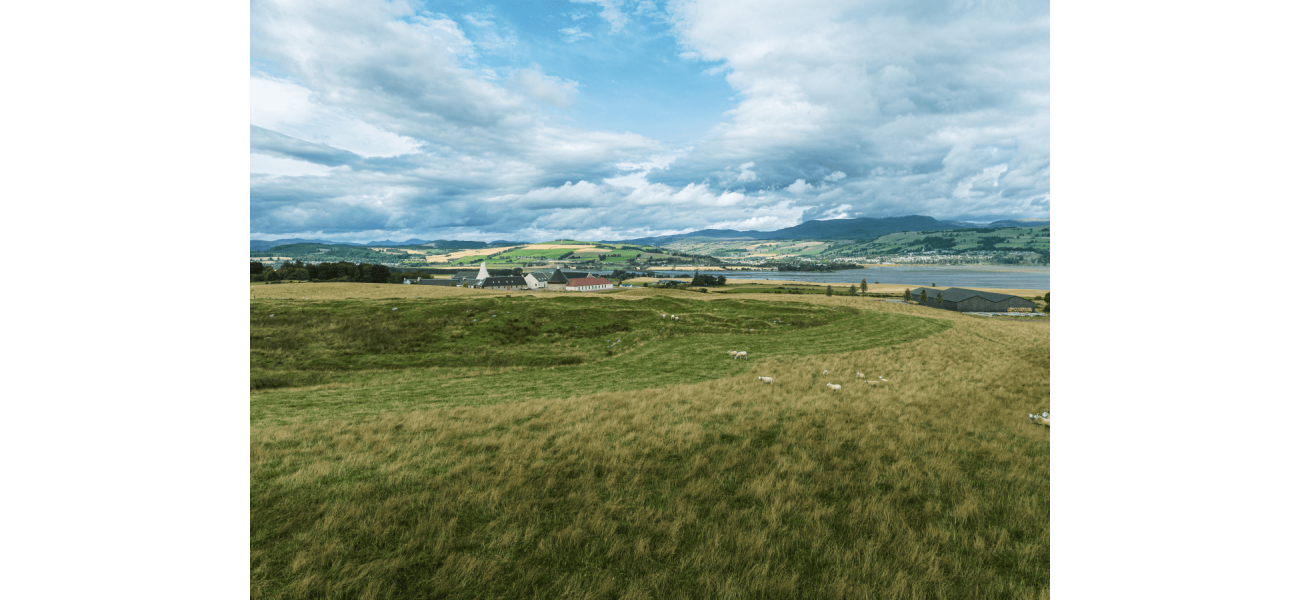A new distillery is set to open on the Black Isle, reviving the production of Ferintosh whisky.
A new distillery on the Black Isle will bring back the famous Ferintosh whisky, once the largest producer of Scotch with a connection to Bonnie Prince Charlie.
February 17th 2025.

Plans are in the works for a new distillery on the Black Isle, which will bring back the legendary Scottish whisky, Ferintosh. According to historical records, Ferintosh was once the largest producer of Scotch whisky, with an impressive 725,000 litres of the spirit being produced annually. It is said that even Bonnie Prince Charlie himself enjoyed a sip of Ferintosh whisky after his defeat at the Battle of Culloden.
Back in the late 18th century, the local distilling industry on the Black Isle employed around 1,000 people, and Ferintosh whisky was in high demand throughout the 1700s. This was largely due to a unique tax break granted by the King to the landowner, which allowed them to produce whisky without paying any duties. However, when this privilege was taken away in 1786, the whisky industry in the area suffered a major blow, and the Ferintosh distillery fell silent. This unfortunate turn of events was even lamented in a poem by Robert Burns, titled "Scotch Drink."
Susan Brook, the Director of Buildings Archaeology Ltd, who is responsible for the plans of the new distillery, shared some insights into the history of Ferintosh. She explained that in 1670, the Forbes of Culloden family acquired the Ferintosh and Bunchrew estates, and in 1690, Duncan Forbes of Culloden secured the privilege of producing whisky without paying duties, as a reward for his services to the Crown during the religious unrest of the late 17th century. This privilege was enjoyed by the Forbes family for almost a century, until it was suddenly revoked in 1786.
Brook also revealed that the Forbes family continued to support the Crown during the Jacobite rebellions of 1715 and 1745, despite it being a costly endeavor. The privilege granted to them resulted in a boom in the production of Ferintosh whisky, making it a popular and important spirit due to its quality and affordable price. Other landowners were not pleased with this unfair advantage and protested, but their efforts were in vain. By 1761, the distillery was receiving grain not only from nearby areas but also from other parts of Scotland to keep up with the growing demand. As a result, the distillery expanded, and production increased significantly, from 41,200 gallons in 1763 to 123,900 gallons in 1780. A warehouse was even opened in London in 1782 to distribute the increasing amounts of Ferintosh whisky being shipped to England. However, this success was short-lived, as the flood of whisky from Ferintosh caused an uproar among Lowland distillers, resulting in the withdrawal of the privilege.
The plans for the new Ferintosh distillery, visitor centre, and café have been submitted to the Highland Council, and if approved, it will create up to 30 new jobs. Bari Reid, Director at Organic Architects, expressed their excitement for the revival of Ferintosh whisky production and how it will bring numerous benefits to the local community. The distillery will also serve as a place for visitors to learn about the rich history of the Black Isle, which has been shaped by events such as the Jacobite rebellion and the Highland clearances. As a nod to the past, the design of the distillery has been consulted with local archaeologists and Historic Environment Scotland, as well as the local farmer and community.
However, when the plans were first announced in 2023, some locals had concerns about potential issues such as increased traffic, pedestrian safety, and the impact on the area's tranquility. Despite these concerns, the plans have moved forward, and the new Ferintosh distillery is set to bring back the infamous whisky that once put the Black Isle on the map. For more whisky news, be sure to subscribe to Scottish Field and stay updated on all things related to Scotland's favorite drink.
Back in the late 18th century, the local distilling industry on the Black Isle employed around 1,000 people, and Ferintosh whisky was in high demand throughout the 1700s. This was largely due to a unique tax break granted by the King to the landowner, which allowed them to produce whisky without paying any duties. However, when this privilege was taken away in 1786, the whisky industry in the area suffered a major blow, and the Ferintosh distillery fell silent. This unfortunate turn of events was even lamented in a poem by Robert Burns, titled "Scotch Drink."
Susan Brook, the Director of Buildings Archaeology Ltd, who is responsible for the plans of the new distillery, shared some insights into the history of Ferintosh. She explained that in 1670, the Forbes of Culloden family acquired the Ferintosh and Bunchrew estates, and in 1690, Duncan Forbes of Culloden secured the privilege of producing whisky without paying duties, as a reward for his services to the Crown during the religious unrest of the late 17th century. This privilege was enjoyed by the Forbes family for almost a century, until it was suddenly revoked in 1786.
Brook also revealed that the Forbes family continued to support the Crown during the Jacobite rebellions of 1715 and 1745, despite it being a costly endeavor. The privilege granted to them resulted in a boom in the production of Ferintosh whisky, making it a popular and important spirit due to its quality and affordable price. Other landowners were not pleased with this unfair advantage and protested, but their efforts were in vain. By 1761, the distillery was receiving grain not only from nearby areas but also from other parts of Scotland to keep up with the growing demand. As a result, the distillery expanded, and production increased significantly, from 41,200 gallons in 1763 to 123,900 gallons in 1780. A warehouse was even opened in London in 1782 to distribute the increasing amounts of Ferintosh whisky being shipped to England. However, this success was short-lived, as the flood of whisky from Ferintosh caused an uproar among Lowland distillers, resulting in the withdrawal of the privilege.
The plans for the new Ferintosh distillery, visitor centre, and café have been submitted to the Highland Council, and if approved, it will create up to 30 new jobs. Bari Reid, Director at Organic Architects, expressed their excitement for the revival of Ferintosh whisky production and how it will bring numerous benefits to the local community. The distillery will also serve as a place for visitors to learn about the rich history of the Black Isle, which has been shaped by events such as the Jacobite rebellion and the Highland clearances. As a nod to the past, the design of the distillery has been consulted with local archaeologists and Historic Environment Scotland, as well as the local farmer and community.
However, when the plans were first announced in 2023, some locals had concerns about potential issues such as increased traffic, pedestrian safety, and the impact on the area's tranquility. Despite these concerns, the plans have moved forward, and the new Ferintosh distillery is set to bring back the infamous whisky that once put the Black Isle on the map. For more whisky news, be sure to subscribe to Scottish Field and stay updated on all things related to Scotland's favorite drink.
[This article has been trending online recently and has been generated with AI. Your feed is customized.]
[Generative AI is experimental.]
0
0
Submit Comment





